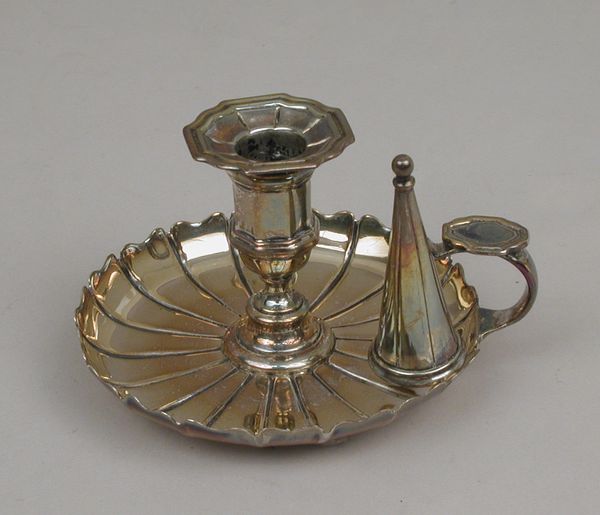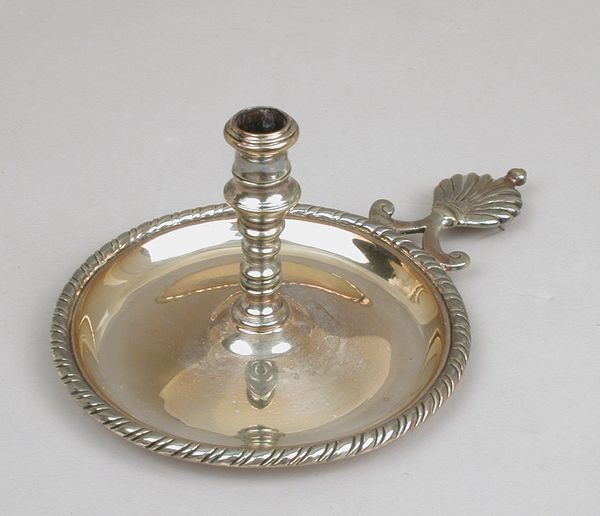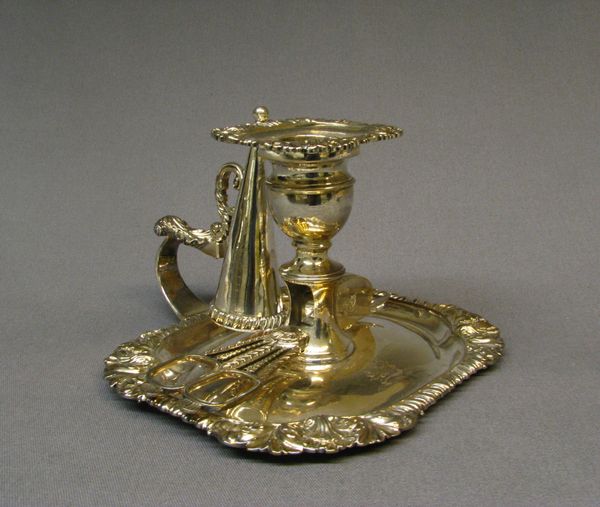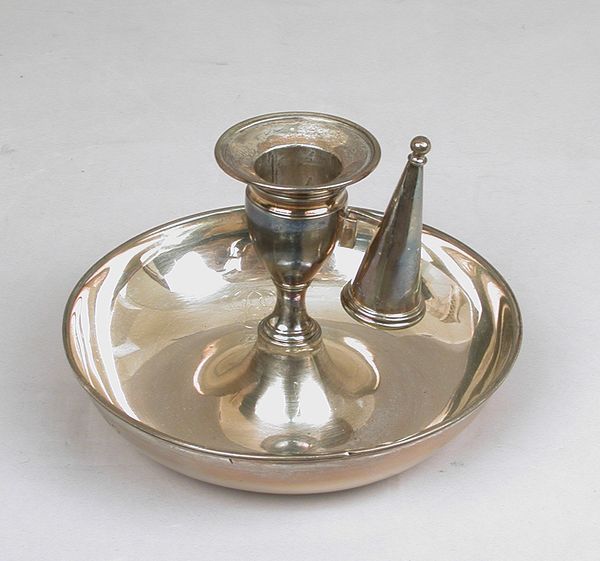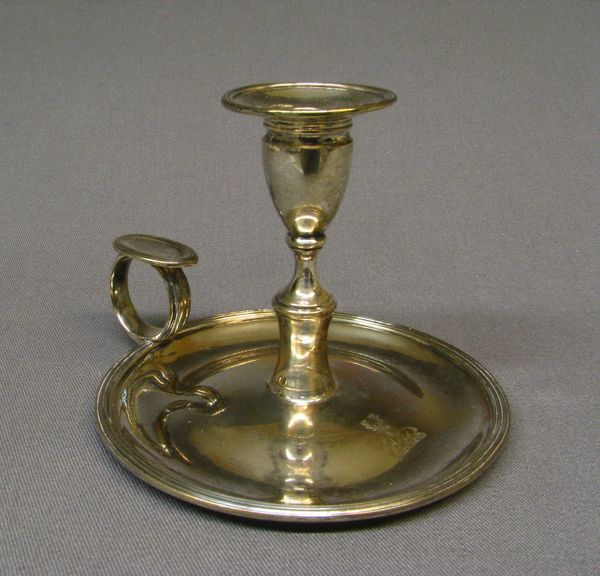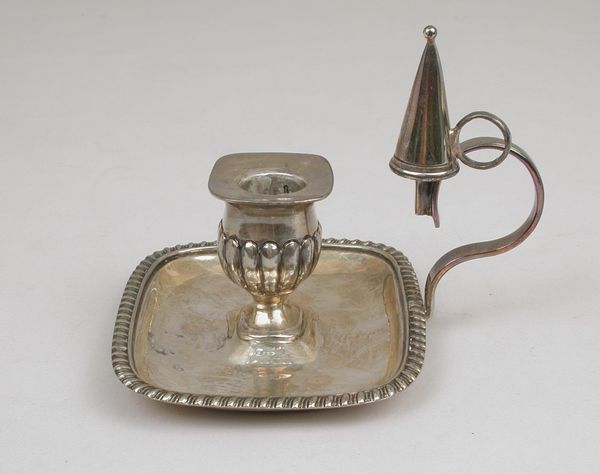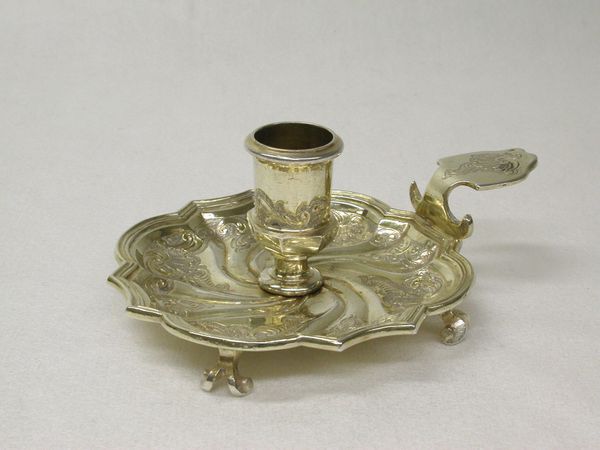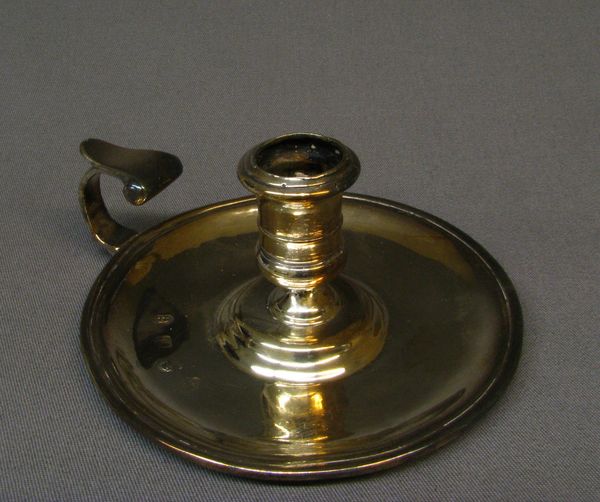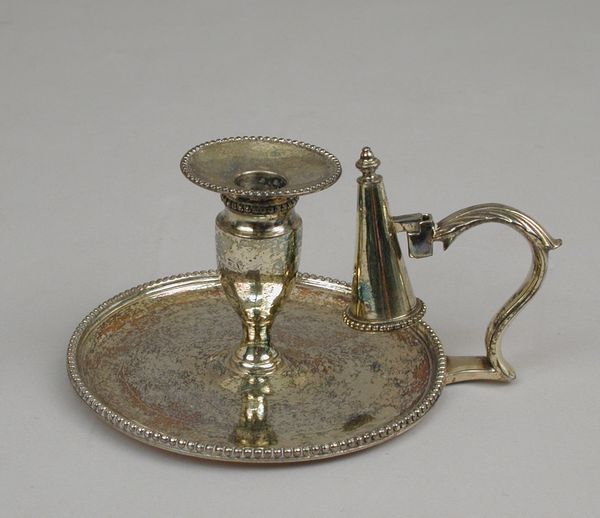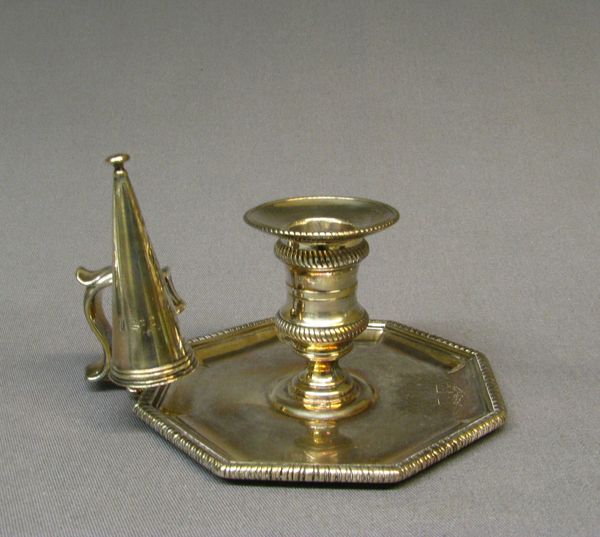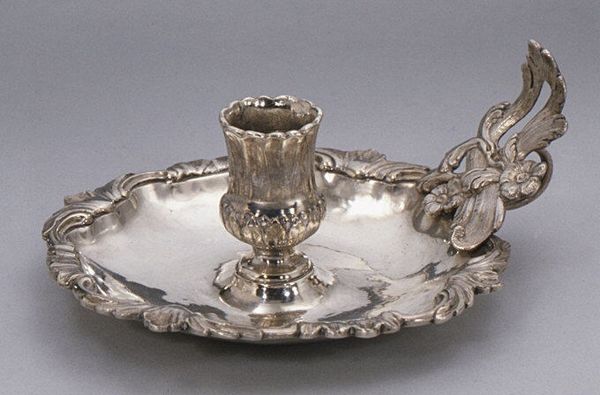
brass, silver, metal, sculpture
#
neoclacissism
#
brass
#
silver
#
metal
#
form
#
sculpture
#
decorative-art
Dimensions: Overall: 2 5/8 × 6 5/8 in. (6.7 × 16.8 cm)
Copyright: Public Domain
Editor: This is the Chamber Candlestick, crafted around 1816-1817 by Robert Garrard I. It’s a beautiful piece made of brass and silver, currently housed at The Met. The reflective quality of the silver really catches my eye. What cultural memories does this candlestick evoke for you? Curator: Ah, a deceptively simple form, isn’t it? On one level, this is just an object for holding a candle. But the repetition of fluted designs, particularly in the handle, speaks volumes. Consider how the fluted design appears in classical architecture – think of Greek columns. What does that visual link communicate to you? Editor: I see what you mean! It definitely elevates the candlestick, gives it a sense of permanence and importance beyond its function. It's almost like it's trying to associate itself with this ideal of classical beauty. Curator: Precisely. This candlestick becomes a small ambassador for those values within the domestic sphere. Notice the circular form echoed throughout. From a Jungian perspective, what meaning could the perfect circle have for those who originally owned and used it? Editor: I remember learning that circular forms represent wholeness or completion… Maybe, for people during that period of Neoclassicism, it represented their desire for stability or a return to an idealized past, especially after the tumultuous years of revolution and war? Curator: An insightful point. Visual echoes are like whispers through time. This candlestick isn't merely a source of light, it is a reflector of cultural aspirations and individual longings. It’s a cultural artifact preserving both practical and cultural heritage. Editor: That makes me think about how everyday objects can actually be powerful storytellers, preserving history in subtle ways. Curator: Indeed. When we truly examine something we can be connected with culture over the flow of time.
Comments
No comments
Be the first to comment and join the conversation on the ultimate creative platform.
